#symbolics #macivory 2 #lispmachine #lisp 40bit Lisp CPU
#OpenBSD is superb if you're the lazy type like me
Besides checking logs once in a while, I've basically not done anything in close to 4 years
If your web stack is Perl+SQLite based, you can basically roll with the default install
My project to document #Elite on the #Commodore64 is now complete. I hope you enjoyed it!
It's time for a Christmas break now, but I'll be back with the Apple II version in the new year.
In the meantime, here's the finished #C64 site for you to explore:
attn @jasoncrowther -- C64 playing Doom at-speed.
https://www.tomshardware.com/news/commodore-64-pi-powered-doom
We're here on Europa for the (Jupiter-) annual molting of the ice worms. Then it's on to Titan for the cryo-beet harvest. The orbits are out of whack this season so we skip Neptune. Then the long slog back to the Mercurian tin fields. Not as lonely being a migratory field worker since they fucked up Earth; lots of new friends. Hey, you'll want to vantablack those radiator fins on your EVA, you'll get another 20% efficiency. No wukkers, always good to help out a new-chum.
i suppose this is not a problem with package managers as a concept,
but i feel like the discoverability of packages is quite bad when i apt search in debian or guix search in guix etc.
successfully finding a relevant package usually requires going onto the internet and using a search engine.
the naming scheme of packages is wildly different across distributions. when i am looking for a python dependency, is it py3- or py- ? how are the stems -utils, -doc, or -tools to be applied?
in addition to this, it seems to me that the metadata for most packages is seriously lacking--meaning that packages are only included in search results in the shell if you just happen to know the exact terms they actually include.
TFW you wake up an hour early for work and spend it reading about historical anarchists and propaganda of the deed.

hit a road block with the discrete transistor computer project yet again
there's this computer someone made with TTL chips that has brainfuck as its ISA
it is appealing to make in a discrete transistor design because it has no registers or an ALU
however, these 74193 ICs are horrendously complicated--up/down counters with all the loading/clearing/presetting logic
up/down counters are by themselves easy, they're just chained Toggle flip flops
this is the low power schottky (LS) version, the HC version uses 3 XOR gates which are a nightmare to build
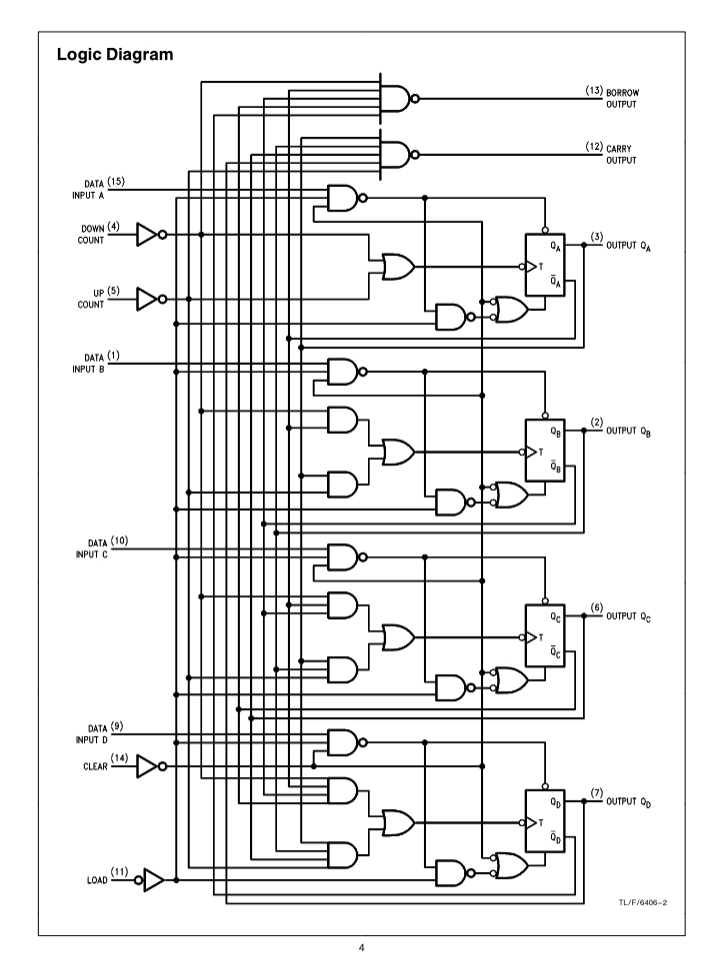
New deep dive into #Elite on the #Commodore64 (3/9): The split-screen mode
Everyone knows about the BBC Micro's split-screen mode in Elite, but it turns out that the #C64 version has one too. I never knew! Find out more at:
https://elite.bbcelite.com/deep_dives/the_split-screen_mode_commodore_64.html
"The people who were put in the camps then were communists. Who cared about them? We knew it, it was printed in the newspapers."
(Yes, Niemöller said that.)
First impressions after a few days with #tangara
https://jasongullickson.com/tangara-first-impressions.html
Cc: @jacqueline
I hope they never change it.
c64 being used in a bakery.
So apparently in 1993, Avon (the MLM (not that MLM (or that kind either))) commissioned a Soft Foam Telephone.
I got one for @gewt but sadly, it arrived broken.

phase #3
from this modularity you are able to do this:
(A) a JK flip flop illustrating operation in toggle mode (effectively operating as a frequency divider)
(B) same circuit as above but operation @ 1kHz
(C) a digital logic gate schematic illustrating a JK flip flop (note preset and clear must be held HIGH for normal operation)
(D) that same logic gate schematic implemented in traditional DTL NANDs
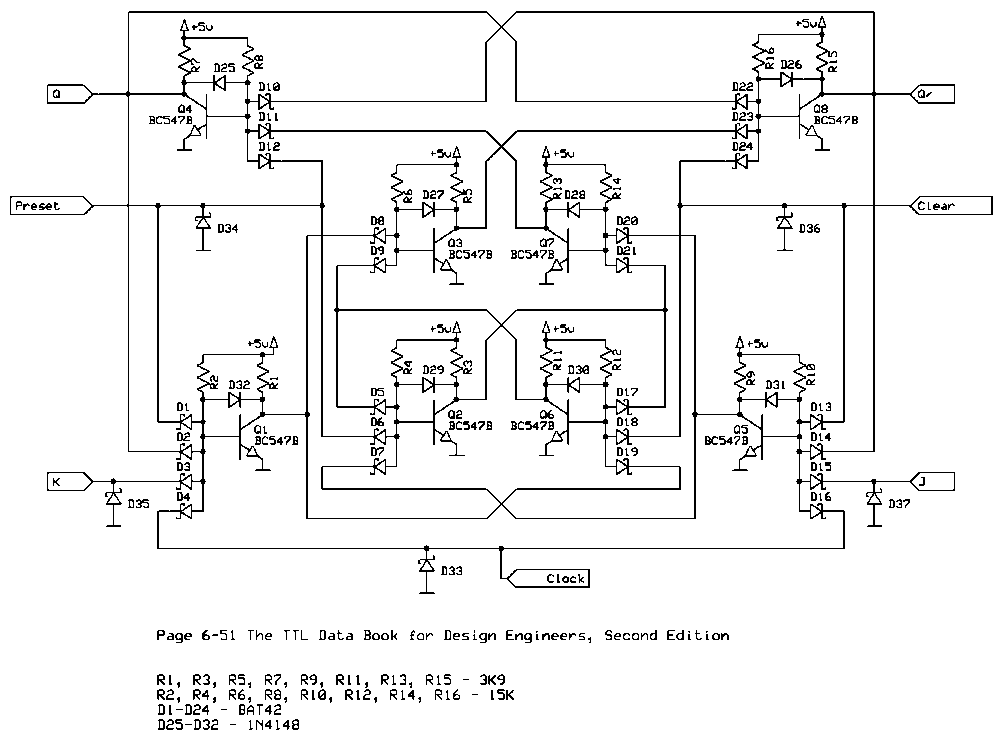
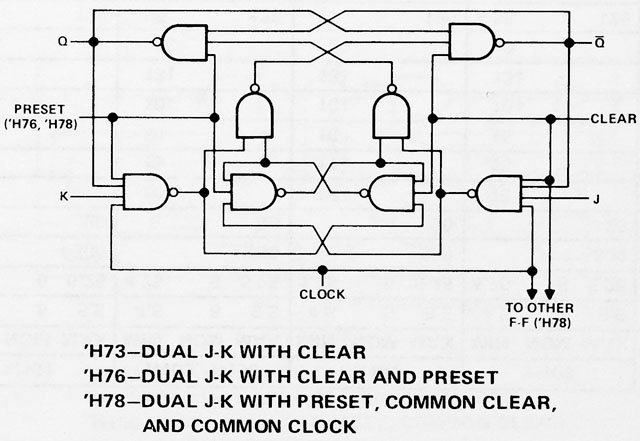
phase #2
here is:
(A) a single traditional DTL NAND illustrating operation @ 500 mHz
(B) a traditional NAND driving a NOT gate @ 500 mHz
if you want i can step you through the electrical characteristics of the circuit but the animations are fairly self-explanatory
re: phase #1
okay turns out i made a huge mistake, the traditional DTL NAND does work, i was somehow systematically inputting it incorrectly into the computer..
phase #1
the tl;dr is that the 'traditional' NAND most hackers seem to have been basing their computers on is seriously flawed, and we'll get into why in the next post
for now, compare and contrast:
(A) the traditional DTL NAND; (B) the modified one that replaces an implied steering diode between the diode logic and the transistor amplifier; (C) the TTL ('DTL') NAND of the famous digital electronics hacker dieter, which uses two transistors in place of the diode logic in the traditional.
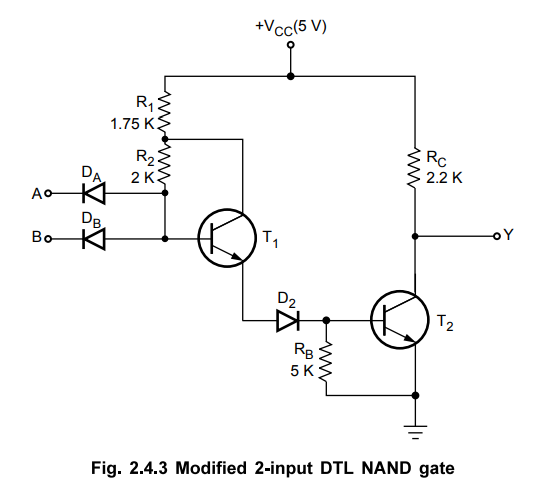
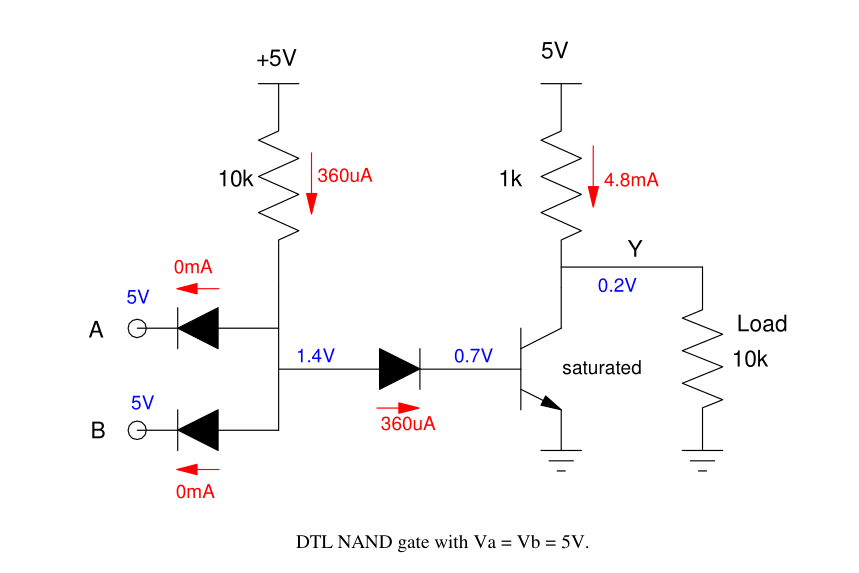
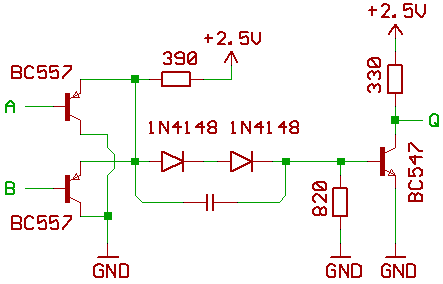
hey everyone this is my new peertube
https://spectra.video/a/vidak/video-channels
please follow me there, i am going to migrate from diode.zone

